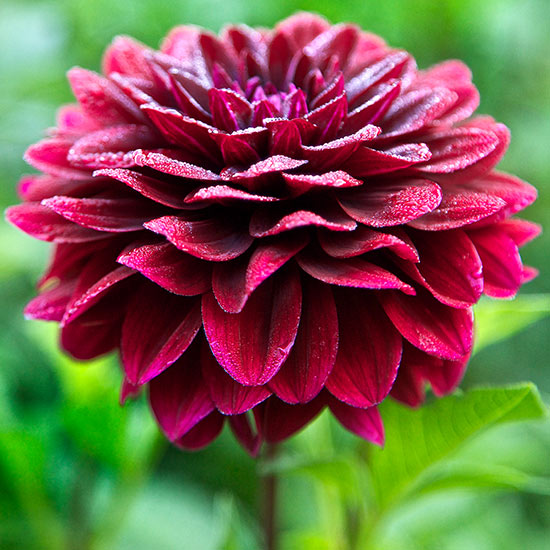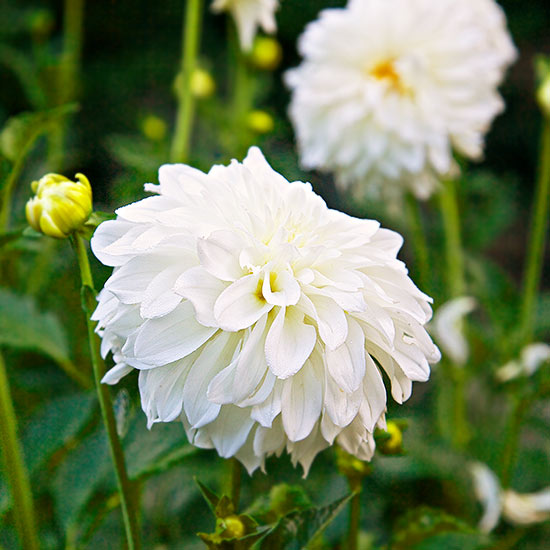





 Dahlia 'Chinese Lantern'
Dahlia 'Chinese Lantern'
Dahlias are a stellar addition to any garden. Native to Mexico, where they grow wild on hillsides, these tender bulbs bloom in many colors from summer until frost. They vary in height, too, so it's likely there's one to star in your garden production.
Dahlias vary so much in form and size that they are divided into classes, each of which offers a full range of colors, heights, and bloom types. The class list includes single, anemone, colarette, peony, decorative, cactus, semicactus, ball, and pompon, as well as many other descriptive names commonly used by nurseries.
Plant height is perhaps the most important consideration when you select dahlias for your garden. Tall types belong at the back of a border, while medium-size varieties look best massed together or combined with other flowers in the middle of a garden. Dwarf dahlias can be planted along the edges of borders or potted for patio display.
Planting dahlias early indoors will give you ahead start on summer flowering. About six weeks before the last expected frost in your area, plant each tuber in a 5-inch pot filled with all-purpose potting mix. Place pots on a sunny window sill and keep the medium moist. Many nurseries sell the seeds of shorter, bedding-type dahlias. For best results, sow seeds on top of potting mix in a flat; lightly cover them with more potting mix and keep moist. Then, transplant young seedlings to individual pots.
Outdoor planting can begin as soon as all threat of frost is past. Dahlias perform best in a sunny location with rich, well-drained soil. To improve a heavy clay soil, work in plenty of organic matter, such as peat and compost. Mature height dictates planting depth and spacing.
Love dahlias? You'll like roses, too. Check out our guide.
continue reading below Dahlia 'Poetic'
Dahlia 'Poetic'
Set tubers of tall types (more than 2-1/2 feet) 3 to 4 inches deep and 20 inches apart. Shorter varieties should be planted 2 to 3 inches deep and 10 inches apart. If you buy nursery-grown plants at local green houses, plant them at the level they grew in their pots.
Tall dahlias require staking, especially in windy areas. At planting time, insert a stout, 5-foot-tall stake into the soil next to each tuber. For extra support after growth has begun, add two more stakes to form a triangle around each plant; tie each plant's stem to the stakes with soft twine.
Regular watering and fertilizing will reward you with plants that produce armloads of blooms. Water dahlias often during dry spells to keep soil damp, and mulch the bed to help conserve moisture. Feed plants weekly with a balanced liquid fertilizer.
Winter protection is necessary if temperatures dip below freezing. After fall frost, cut stalks back to 6 inches above ground level. Use a garden fork to lift the tubers from the soil, then wash away any soil that clings to them. While the tubers are still slightly damp, place them in a box and cover with vermiculite. Store in a dark, cool place until spring planting.
Another beautiful bulb to try: Eremurus.
Copyright © www.100flowers.win Botanic Garden All Rights Reserved